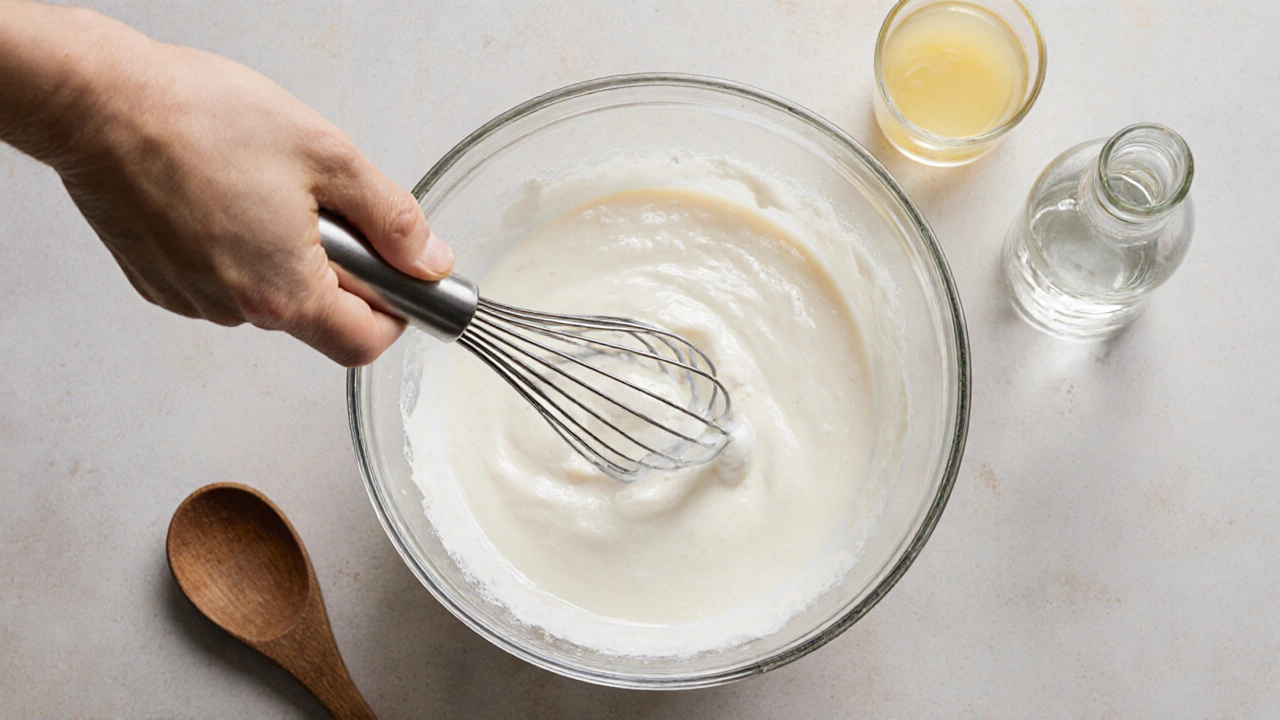
Key Ingredients for Perfect Pavlova - What You Need to Know
Discover the essential ingredients for a perfect pavlova, why each matters, and tips to achieve a crisp, airy meringue topped with fresh fruit and cream.
When working with fruit topping, a sweet, colorful layer of fresh or prepared fruit applied on cakes, cupcakes, or pastries. Also known as fruit garnish, it adds natural flavor, visual pop, and a touch of freshness that simple frosting can’t match. Fruit topping is a type of dessert garnish that combines taste and texture, making every bite feel lighter and more vibrant. This page explains what fruit topping is, why it matters, and where it fits into the broader world of baking.
One of the biggest allies of fruit topping is cake decoration, the art of adding visual and textural elements to baked goods. Cake decoration often relies on buttercream, fondant, or ganache, but a well‑chosen fruit topping can elevate those basics by adding a burst of natural color and flavor. The relationship is simple: fruit topping enhances cake decoration, while cake decoration provides the canvas for fruit topping to shine. When you pair fresh berries with smooth buttercream, the fruit’s acidity cuts through the sweetness, creating a balanced bite. This combo is especially popular for summer celebrations, where seasonality drives ingredient choices.
Fresh fruit itself is another key player. fresh fruit, edible produce harvested at peak ripeness, often used raw or lightly macerated, brings natural sugars, juices, and a pleasant bite. Attributes include sweetness level, acidity, and texture, which directly affect how the topping behaves on a cake. For example, strawberries offer a juicy, soft texture, while kiwi adds a tangy zing and a bright green hue. Knowing the attributes helps you match fruit to the cake’s flavor profile, ensuring the final product isn’t overly sweet or too tart. Using fresh fruit also means you get a visual boost—vibrant reds, purples, and yellows that draw the eye before the palate even gets a chance.
Beyond looks and taste, fruit topping serves practical purposes. It can act as a natural dessert garnish, a finishing touch that adds flavor, texture, and visual appeal to sweets. A dessert garnish often doubles as a moisture barrier, preventing the cake from drying out while keeping the frosting smooth. Fruit toppings also cater to health‑conscious bakers, offering a way to cut down on added sugars and artificial colors. By swapping a sugary glaze for a layer of sliced mango or blueberries, you still get a sweet finish but with added vitamins and antioxidants. This aligns with current trends where bakers seek both indulgence and nutrition in their creations.
Our collection below dives into the specifics you’ll need to master fruit topping. You’ll find posts that compare birthday cake flavors, explain the pros and cons of baked versus no‑bake cheesecake, and share tricks for keeping fudge soft—all of which intersect with fruit topping choices. Whether you’re looking for a quick guide on pairing fruit with chocolate frosting or a deep dive into seasonal fruit availability, the articles provide actionable tips, troubleshooting advice, and creative inspiration. Explore the range, pick the ideas that fit your next bake, and turn ordinary cakes into showstoppers with the power of fruit topping.

Discover the essential ingredients for a perfect pavlova, why each matters, and tips to achieve a crisp, airy meringue topped with fresh fruit and cream.